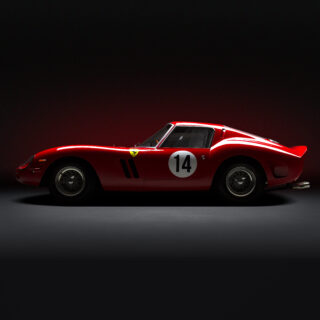
You can’t overstate the importance of the Mini to a certain generation of British drivers. Most often, there was a Mini in the family. It was the car you learned to drive in. Then another – likely more battered – example would have been your first car. That emotional thread runs through your automotive psychology like the stitching in a pair of jeans.
Car of the 20th Century: Mini
A Mini is ordinary. For the owner of this car, Will Yearsley – and for me come to that – it’s the most ordinary vehicle of our youth. Except of course it isn’t. It’s anything but ordinary. The Mini got itself voted, in more than one authoritative poll, the “Car of the 20th Century”.
With justification. Because of the Coopers, the Monte Carlo Rally wins, and its ability to beat much more powerful cars in track racing. Because of its place in London’s swinging ’60s scene. And also for the vastly significant engineering innovations that make it a piece of packaging genius, and – now as then – a particular kind of joy to drive.
So Yearsley has acquired some Minis. Not a barn full of quasi-random examples, but a perfectly curated capsule collection.
It starts with a ‘proper’ 1969 1275cc Cooper S, in almond green with an old english white roof. That was the heyday of the ADO15 Mini’s four-decade production span. During the 1980s the Mini frankly became a bit of a laughing stock as a new car: full-featured modern superminis had displaced it in the general public’s eyes.
It got a new lease of life during the 1990s as Rover, Mini’s owner, saw its potential as a left-field curio and moved it out of the mainstream market. John Cooper returned to add some sparkle. So Yearsley also has one of those, one that actually once belonged to the Cooper family.
He’s also got the maddest of the BMW Minis, a John Cooper Works GP3, the wide-arched one with 306HP and a 164mph top speed.
But then he wanted a Mini that was truly his own. So he commissioned his fourth, a Mini Remastered by David Brown Automotive. These are ground-up restomods, building an original identity into an entirely new car. (Oh, the name… David Brown is a British industrialist but no relation to David Brown, the late British Industrialist who once owned Aston Martin.)
Yearsley’s is registered and chassis-plated as a 1989 Sprite, one of Rover’s more feeble limited editions. Its origin is wholly irrelevant to our story, except that the 1989 identity allows it to swerve some bothersome new-car legislative constraints. That time-slipping has also enabled DBA to sell several of its Remastered cars to the Americas.
DBA’s process starts with a complete new bodyshell from British Motor Heritage, an enterprise descended form the Leyland and Rover Groups that acquired much of the original tooling and now remanufactures a galaxy of parts. The bodyshells are doubtless better-made and better-protected against corrosion than they were back in period.
But that’s not enough for DBA, which further braces and finesses the shell, and removes the external seams that run down the A- and D pillars. Then a lengthy paint process brings it to a finish of glossy perfection, set off by chrome to a matching standard.
The result is, to those of us brought up on Minis, a strange sort of unsettling beauty. Like the hi-res ray-traced render of an idealised truth.
Inside, the vibe departs further from the bare-bones Issigonis script. Sure, there are period-looking Smiths dials, but no factory Mini ever put its big-dish speedo in front of the driver. They were central, where a CarPlay-enabled display screen now resides.
Air conditioning begins a list of new amenities, commanded by machined aluminium switchgear. Door handles, speaker grilles and a cupholder get the same material treatment. The seats are bigger and deeper upholstered, the leather crafted like saddlery, the carpet soft under your toes.
DBA will supply an engine from noted A-series tuner Oselli. But Yearsley’s is a more tractable setup, running 10.1:1 compression for 88lb ft and 71bhp. That’s more than enough for a small-roads car that weighs just three-quarters of a ton. Especially when the exhaust sound is fruity as a greengrocer’s. And a Mini’s tiny size perceptually amplifies all sensations of movement.
Yearsley opted for a five-speed transmission, another piece of engineering that never issued from the original production line.
But then, Minis were always a target for the modders, either as competition cars or as wholly refinished luxury city runabouts from – inter alia – Radford, Wood & Pickett and Margrave.
That 1960s-’70s fad was apparently started by Peter Sellers, who asked Rolls-Royce coachbuilder Hoopers to modify and retrim a Mini. In the process Hooper more than tripled the base car’s price. Owners of those various coachbuilt Minis included all four Beatles, Mick Jagger, and Mike Nesmith.
Yearsley’s car has been looked over by Minisport, one of Britain’s longest-standing Mini independent hopper-uppers. The DBA process is seriously expensive. But Minisport’s view was that its value might well hold up just as it has for those now highly collectable in-period conversions.










































